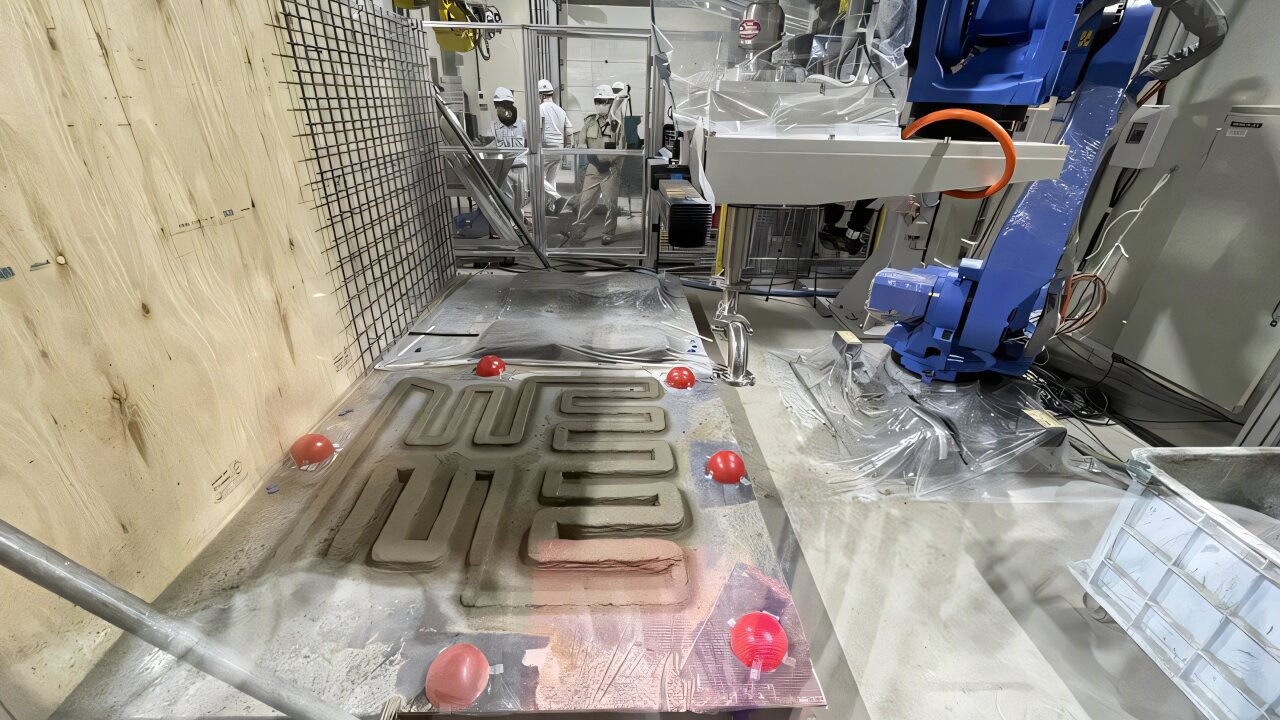Tech
SolarWinds warns over dangerous RCE flaw | Computer Weekly

SolarWinds is urging users of its Web Help Desk helpdesk ticketing and asset management software to ensure their instances are up-to-date after patching a newly-uncovered remote code execution (RCE) flaw.
Tracked as CVE-2025-26399, the bug bypasses a fix for a previous flaw, CVE-2024-28988, which was discovered and disclosed by Guy Lederfein of Trend Micro Security Research 12 months ago, in September 2024. However, in a twist reminiscent of the nursery rhyme about old ladies swallowing spiders to catch flies, CVE-2024-28988 itself bypassed a fix for a third issue, CVE-2024-28986.
Like the preceeding vulnerabilities, the latest issue once again takes the form of an unauthenticated AjaxProxy deserialisation RCE vulnerability that enables a threat actor to run commands on the host machine, should they succeed in exploiting it.
A warning from history
Computer Weekly understands that there is currently no evidence of any threat actors having exploited CVE-2025-26399 in the wild.
However, SolarWinds’ Web Help Desk tool is in extensive use at major enterprises and government and public sector bodies alike, and the earlier ‘versions’ of the new flaw were considered serious enough to be added to the Known Exploited Vulnerabilities catalogue run by the US’ Cybersecurity and Infrastructure Security Agency (CISA).
The addition of a bug to the KEV catalogue obliges all agencies of the federal civilian executive branch (FCEB) in the US to take action to address them in a specific timeframe, but the list also serves as a useful indicator of which flaws organisations should be prioritising to patch.
In light of this, it is highly-probable that CVE-2025-26399 will be targeted by threat actors in the very near future, if such activity has not already started.
Furthermore, the events of the 2020-2021 Solorigate/Sunburst incident impacting SolarWinds users also serves as a warning from history, according to Ryan Dewhurst, head of proactive threat intelligence at watchTowr, an exposure management specialist, who noted that SolarWinds is a name that “needs no introduction” in cyber security circles.
“The infamous supply chain attack… allowed months long access into multiple Western government agencies and left a lasting mark on the industry. Fast forward to 2024: an unauthenticated remote deserialisation vulnerability was patched… then patched again. And now, here we are with yet another addressing the very same flaw. Third time’s the charm?” said Dewhurst.
“The original bug was actively exploited in the wild, and while we’re not yet aware of active exploitation of this latest patch bypass, history suggests it’s only a matter of time.”
The Sunburst incident saw almost 20,000 SolarWinds customers download and install a malicious update to the firm’s Orion platform, with prominent victims including US government bodies such as the Department of Energy (DoE) and the National Nuclear Safety Administration (NNSA) that maintains America’s nuclear arsenal.
Earlier this year SolarWinds and the Securities and Exchange Commission (SEC) reached a settlement in principle resolving a case against the organisation and its security leadership over the circumstances that led to the compromise of Orion.
Tech
New algorithm enhances Doppler resolution of unmanned vehicle radars

A research team has developed an extrapolation-based Doppler resolution enhancement algorithm for frequency modulated continuous wave radars. The algorithm improves system performance, offering an advancement that is superior to existing ultra-high-resolution technologies.
The findings are published in the Journal of Electrical Engineering & Technology. The team was led by Sang-dong Kim and Bong-seok Kim, affiliated with the DGIST Division of Mobility Technology, in collaboration with a team led by Professor Youngdoo Choi, affiliated with the Republic of Korea Naval Academy (ROKNA).
Improving radar accuracy without extra hardware
This research introduces a technology that improves radar detection accuracy without the need for additional complex computations or hardware. The technology is expected to contribute to enhancing radar system performance on various intelligent unmanned platforms such as unmanned aerial vehicles (UAVs), unmanned ships, and autonomous vehicles.
Conventional radar systems analyze the Doppler effect to determine the velocity of a target, but the fast Fourier transform (FFT)-based approach has limitations regarding resolution (i.e., the accuracy of velocity discrimination). To address this, the joint DGIST–ROKNA research team applied a signal extrapolation technique and has proposed a new algorithm that enhances Doppler resolution without extending observation time.
Performance gains and real-world applications
The proposed method successfully reduces the root mean square error of velocity estimation by up to 33% and decreases the target miss rate by up to 68%, representing a substantial improvement over the conventional approach. Notably, the proposed method maintains the same computational complexity level as the conventional FFT method, thereby simultaneously achieving fast processing speed and high efficiency.
This technology can effectively solve the problem of signal overlap between targets moving at similar velocities, particularly when UAVs or radar systems detect multiple objects simultaneously. It can therefore greatly enhance the ability to distinguish closely spaced targets and improve detection accuracy, marking a new milestone in the advancement of high-resolution target detection technology.
Additionally, the technology is highly regarded for its industrial applicability because it requires no additional hardware resources and features a simple computational structure that enables real-time implementation.
Sang-dong Kim, principal researcher at the Division of Mobility Technology (concurrently serving the interdisciplinary engineering major), said, “This study demonstrates an improvement in both the efficiency and precision of radar signal processing, enabling more accurate target detection without the need for additional equipment. It is expected to evolve into a key technology for defense, autonomous driving, and unmanned systems.”
More information:
Youngdoo Choi et al, Doppler Resolution Enhancement Algorithm Based on Extrapolation for FMCW Radar, Journal of Electrical Engineering & Technology (2025). DOI: 10.1007/s42835-025-02453-6
Citation:
New algorithm enhances Doppler resolution of unmanned vehicle radars (2025, November 11)
retrieved 11 November 2025
from https://techxplore.com/news/2025-11-algorithm-doppler-resolution-unmanned-vehicle.html
This document is subject to copyright. Apart from any fair dealing for the purpose of private study or research, no
part may be reproduced without the written permission. The content is provided for information purposes only.
Tech
Spray 3D concrete printing simulator boosts strength and design

Concrete 3D printing reduces both time and cost by eliminating traditional formwork, the temporary mold for casting. Yet most of today’s systems rely on extrusion-based methods, which deposit material very close to a nozzle layer by layer. This makes it impossible to print around reinforcement bars (rebars) without risk of collision, limiting both design flexibility and structural integrity of builds.
Kenji Shimada and researchers in his Carnegie Mellon University’s Computational Engineering and Robotics Laboratory (CERLAB), are breaking through that limitation with a new simulation tool for spray-based concrete 3D printing.
“Spray-based concrete 3D printing is a new process with complicated physical phenomena,” said Shimada, a professor of mechanical engineering. “In this method, a modified shotcrete mixture is sprayed from a nozzle to build up on a surface, even around rebar.”
The ability to print freely around reinforcement is especially important in places like Japan and California, where earthquakes are an imminent threat and structural strength is critical.
“To make this technology viable, we must be able to predict exactly how the concrete will spray and dry into the final shape,” Shimada explained. “That’s why we developed a simulator for concrete spray 3D printing.”
The new simulator can model the viscoelastic behaviors of shotcrete mixtures, including drip, particle rebound, spread, and solidification time. This way, contractors can assess multiple printing paths based on a CAD design with the simulator to evaluate whether spray 3D printing is a feasible fabrication technique for their structure.
The team traveled to Tokyo, Japan, where Shimizu Corporation already operates spray 3D printing robots to validate their model. In the first test, the team focused on the simulator’s ability to predict shape based on the speed of the nozzle’s movement. With 90.75% accuracy, the simulator could predict the height of the sprayed concrete. The second test showed that the simulator could predict printing over rebar with 92.3% and 97.9% accuracy for width and thickness, respectively.
According to Soji Yamakawa, a research scientist in Shimada’s lab and the lead author of the team’s research paper published in IEEE Robotics and Automation Letters, a simulation of this kind would typically take hours, if not days, to run.
“By making wild assumptions, we were able to successfully simplify a super complex physics simulation into a combination of efficient algorithms and data structures and still achieved highly realistic output,” Yamakawa said.
Future work will aim to increase accuracy by identifying environmental parameters like humidity, optimizing performance, and adding plastering simulation to create smoother finished products.
“There are still so many applications and technologies that we can develop with robotics,” said Kyshalee Vazquez-Santiago, a co-author of the paper and a mechanical engineering Ph.D. candidate leading the Mobile Manipulators research group within CERLAB.
“Even in concrete 3D printing, we are working with an entirely new type of application and approach that has so many advantages but leaves so much room for further development.”
More information:
Soji Yamakawa et al, Concrete Spray 3D Printing Simulator for Nozzle Trajectory Planning, IEEE Robotics and Automation Letters (2025). DOI: 10.1109/lra.2025.3615038
Citation:
Spray 3D concrete printing simulator boosts strength and design (2025, November 11)
retrieved 11 November 2025
from https://techxplore.com/news/2025-11-spray-3d-concrete-simulator-boosts.html
This document is subject to copyright. Apart from any fair dealing for the purpose of private study or research, no
part may be reproduced without the written permission. The content is provided for information purposes only.
Tech
The Nike x Hyperice Hyperboot Is $200 Off

For the first time, the Nike x Hyperice Hyperboot is on sale. The recovery boots are $200 off—normally $899, now $699—through December 1. They’re also HSA/FSA eligible. Normally, I’d point you toward the Normatec 3 Legs; they cost the same and offer more leg coverage, but at this discounted price, the Hyperice Hyperboot’s portability and comfort are a hard deal to pass up.
The discount is part of Hyperice’s Black Friday sale, which runs from November 20 to December 1. Stay tuned, as we’ll be tracking all the best Hyperice holiday deals as they roll out.
Hyperice’s Normatec recovery boots are a favorite among athletes, but their one downside is that you have to stay put while using them. The Hyperboots pack the same air compression tech as the Normatecs, but in a wearable, high-top design, courtesy of Nike. You can get a foot massage while you do the dishes.
Each boot offer three levels of compression and heat (up to 125 degrees Fahrenheit), adjustable via a built-in control panel. The two sync automatically when worn together, and battery life is about 90 minutes per charge. They’re IP54 rated, meaning they’re dust- and splash-resistant, but not waterproof.
Reviewer Kristin Canning tested the boots on her drive back home after a day of snowboarding and said it was a game changer. She could flush out lactic acid and thaw her toes before she even got home. While they’re recovery boots, they do have a warmup mode that makes them just as useful before workouts to get your blood flowing.
Canning did point out that the air pumps make an airplane-like hum, but it’s nothing too overwhelming. If you’ve already bought your season pass and are doing your one-leg squats and hip rotations, there’s no better time to grab a pair of the boots that will keep your legs fresh all the way through March.
Power up with unlimited access to WIRED. Get best-in-class reporting and exclusive subscriber content that’s too important to ignore. Subscribe Today.
-

 Tech1 week ago
Tech1 week agoCISOs in court: Balancing cyber resilience and legal accountability | Computer Weekly
-

 Fashion1 week ago
Fashion1 week agoCoach reconnects with Bank & Vogue for upcycled bags using corduroy
-

 Fashion1 week ago
Fashion1 week agoGermany’s Adidas achieves highest-ever quarterly sales in Q3 2025
-

 Business1 week ago
Business1 week agoFirst new Amazon electric heavy goods vehicles hit UK roads
-

 Sports1 week ago
Sports1 week agoNFL broadcaster Cris Collinsworth makes government shutdown joke as Seahawks clobber Commanders
-

 Tech1 week ago
Tech1 week agoThe Security Interviews: Colin Mahony, CEO, Recorded Future | Computer Weekly
-

 Sports1 week ago
Sports1 week agoSources: QB Daniels dislocated elbow in loss
-

 Fashion7 days ago
Fashion7 days agoVietnam’s manufacturing growth hits 15-month high as PMI climbs to 54









